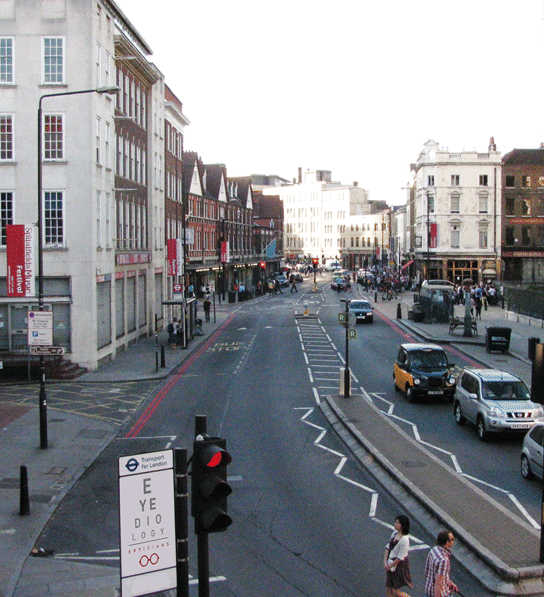Spitalfields – A Brief History
Spitalfields received its name from St. Mary’s Spittel, a hospital and priory that was founded in 1197.
The Spitalfield Market did not begin until the thirteenth century in the field next to the priory. This was a rural area that by 1666 was being used by all manner of traders. By 1682 King Charles II allowed John Balch a charter to hold a market on Thursdays and Saturdays in the Spital Square. The market was such a success that by 1685 people were settling in the area. For the next 200 years, the market flourished with Irish labourers settling in the area in the 1700’s and then later by East European Jews. By 1876 a market building was under construction by Robert Horner and was completed in 1893.
In the 1920s the City of London took direct control of the market area and added to the existing buildings and structures in the area. There had been a desire to save the original housing and merchant terraces that were located west of Brick Lane from being demolished for redevelopment, so they instead opted for refurbishment and modernisation, keeping as much of the existing structure as possible. By 1991 the market had become crowded and the streets were congested around it. This caused the decision to move the market to Leyton. The new area covered 31 acres and had access to an extensive road network and was accessible to ports. The centre of the market was Market Hall, which had over 100 traders locations. These spots dealt in vegetables, fruit, flowers and had access to ripening rooms, cold storage units and racking for produce. However, there were four other additional buildings in the area that catered to supplying companies, fruit importers and other similar businesses. This also included space for companies that supply diesel, propane, pallets and fork lift maintenance. Plus there was plenty of parking to accommodate all the customers, staff and traders, as well as market cafes that also a huge draw at the market.
Within the last 14 years the area where the old Spitalfields Market was located has also began to thrive again. By 2005 the Spitalfields regeneration operation was complete encompassing two major spaces. These are Bishop Square and Crispin Place, along with an art programme, an events programme, the restoration of historical streets and new restaurants and retail shops. Both the old and new Spitalfields Market as with the rest of the Spitalfields area are now destination locations and not just a market to visit for fresh produce.
The Spitalfields Market is open every day except Monday and Saturday. The stores house everything imaginable and offer an array of clothing, foods, art and interior design pieces. There are also numerous cafes and bars around the market that are independently owned and operated. As well as numerous other stores and restaurants, such as Canteen, Giraffe and Galvin La Chapell. The Spitalfields Traders Market is open every day except Monday and Saturday and is home to 110 stalls on their busiest days and is located in Crispin Place. This is the perfect location since it is weather proofed and wheelchair accessible. Within this area a person can find modern and vintage clothing, music, toys, jewellery, home designs and much more. There are also numerous boutiques, restaurants and shops in the surrounding area.
The Spitalfields Art Market is located on Market Street and offers art from up and coming to established artists. Everything from photography to paintings can be found here. Artists, such as Dennis Severs live right on Folgate Street in a home reminiscent of the 18th century, which is also open to the public. While at the bottom of Brick Lane is the Whitechapel Art Gallery. Also, Gilbert and George can be found in Spitalfields, as well as Tracy Emim and Stuart Brisley. Plus, Dan Cruickshanik, the well known TV personality, architect expert and Georgian fanatic was part of the Spitalfields restoration team and still lives in Spitalfields. Not to mention the writer Jeanette Winterson took a devastated Georgian home and turned it into an organic food store, which is part of the Slow Food movement.
Furthermore, be sure not to miss the Spitalfields Public Art programme, which showcases sculptures and soundscapes within the Spitalfields Market, as well as visiting the numerous community events that take place at the market as well. The events are free to the community and offer concerts, tango classes, festivals, fashion shows and numerous other programs.











